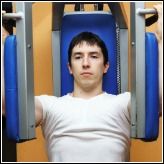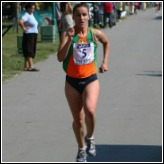Plyometric Workouts To Propel You To the Top
If you are looking for good plyometric workouts, properly demonstrated, then you have come to the right place. This is what I do for 48 weeks of the year - I devise and implement plyometric workouts to elite level athletes.
What is Plyometrics?
Plyometric exercises are used to increase the speed or force of muscular contractions, often with the goal of increasing the height or distance of a jump. A plyometric movement is an action in which a muscle is loaded and then contracted in rapid sequence. It uses the strength, elasticity and the innervation of the muscle and surrounding tissues to help the athlete to jump higher, jump longer and run faster.
To prepare for your workouts you should ensure that you are fit and healthy to do so. Plyometric training routines have a way of finding your weak spots. So, any previous injuries should be dealt with before attempting plyometric training.
Donald Chu recommends that a participant should be able to perform 5 repetitions of the squat exercise at 60% of their body weight before doing plyometrics. And although I can’t disagree with that, there are other ways to prepare the body for the shock of plyometric training.
Younger athletes shouldn’t have to wait until they are able to weight lift before embarking on plyometric training.
Pre-conditioning Workouts
The video below provide you with what I refer to as pre-conditioning exercises before embarking on an all out plyometrics session…
Low Impact Workouts
After you have gone through the pre-conditioning phase, you are now ready to take on a more dynamic approach to your plyometric workouts and training routines. The video below will give you some examples of what I term low impact plyometric exercises…
Medium Impact Workouts
The next phase in the evolution of your workouts is to move on to even more demanding training routines. An increase in the demand refers to the intensity of the activity, plyometric training becomes harder the more intense the activity becomes.
The video below gives examples of more demanding exercise routines that are medium in intensity…
How Much Should You Do?
This is a difficult question to answer, but the volume of your training sessions will obviously vary with regard to:
- Your event or sport
- Your age
- Your level of fitness
- The time in the training year (phase of training)
- The intensity of the plyometrics exercises being performed
Here are some guidelines:
- For jumps on the spot or from standing measure the volume in terms of foot contacts.
- As a guide a beginner in pre-season training in a single plyometric workout could perform 60-100 foot contacts of low impact exercises, for example, 5x5 tuck jumps and 5x5 hops on the spot (left and right) and 5x10 split jumps.
- Intermediate athletes plyometric workouts might involve 100 -150 foot contacts of low impact exercises
- Advanced athletes might be capable of 150 -200 foot contacts of low to medium intensity
- The intensity of the exercise is the key determinant to the number of foot contact. The more dynamic the movement and the greater power generated, the greater the need to reduce the number of foot contacts
- Bounds and hops can also be measured by ground contacts but are made more intense by the distance they are performed over.
Sign Up For The Latest Track And Field News And Improve Your Athletic Performance!
From "Plyometric Workouts To Propel You To The Top" Back To "Faster, Stronger, Better – Your Shortcut To Improved Athletic Performance"
Learn more about plyometric training







